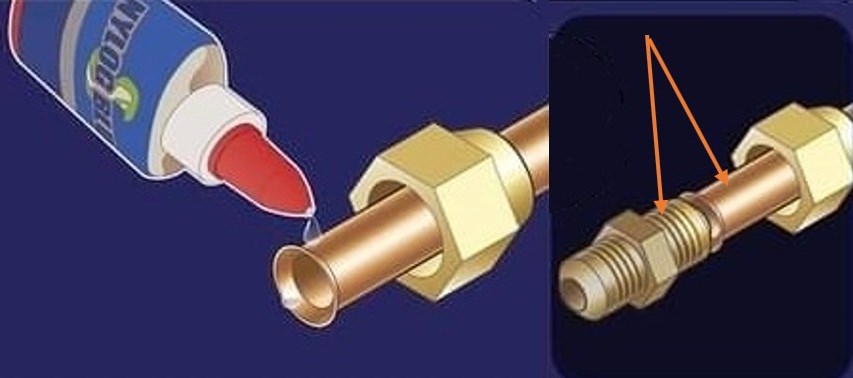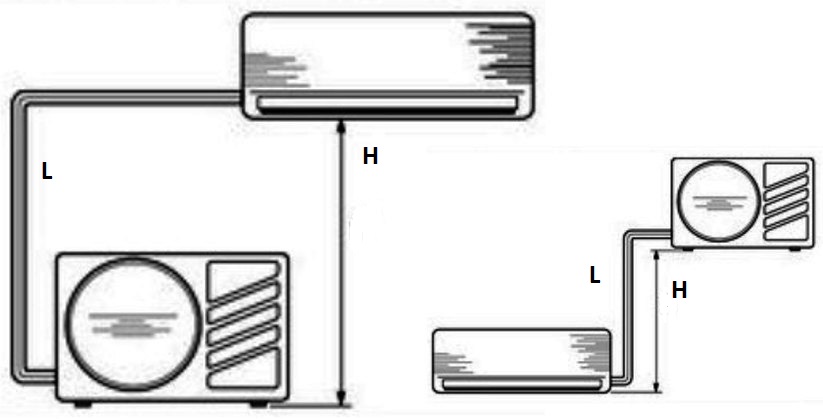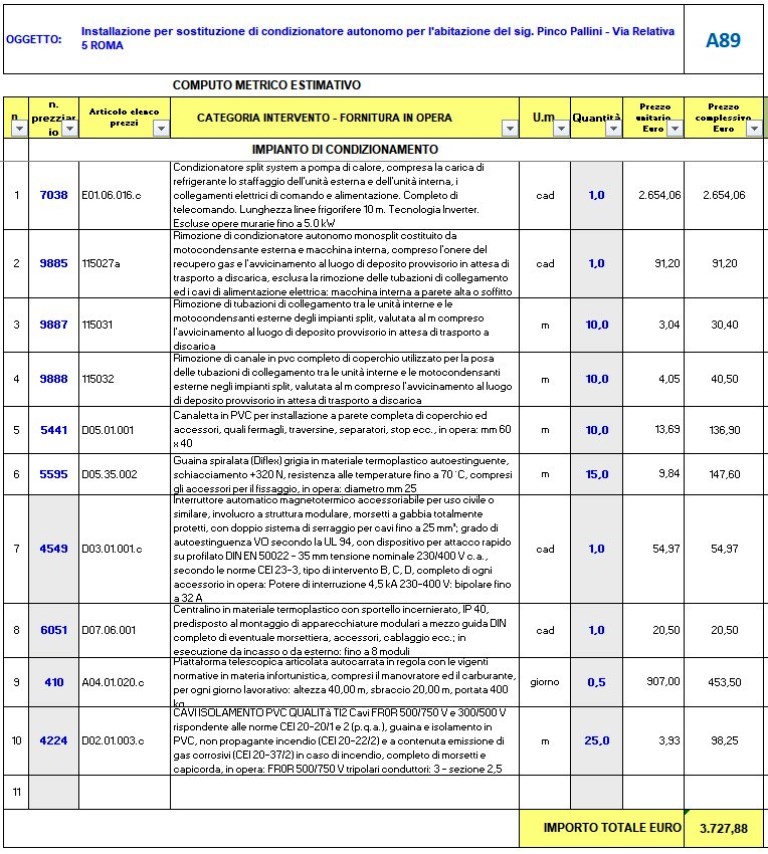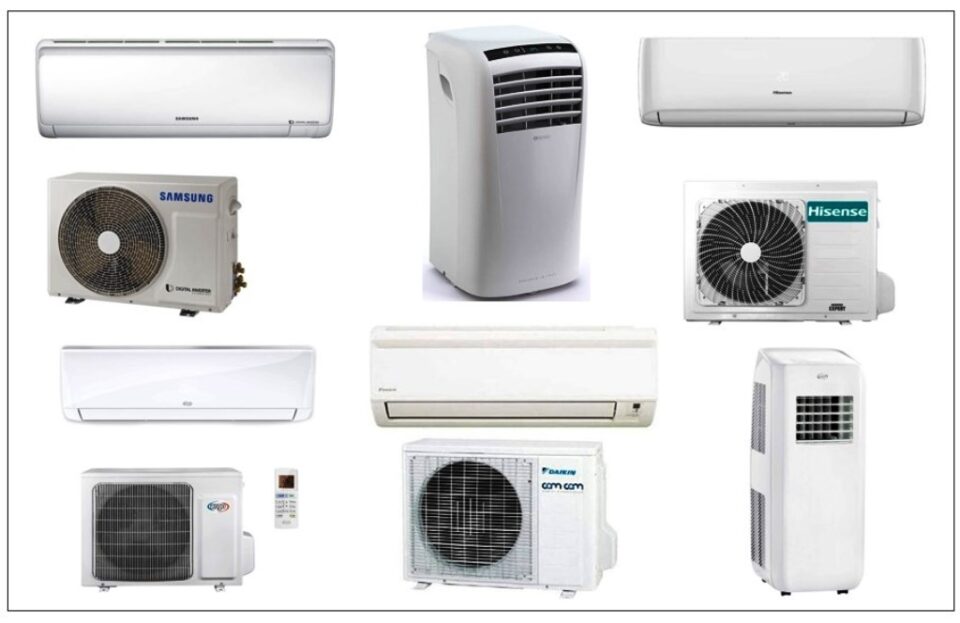Autonomous air conditioner installation use maintenance

General information on how to use the independent air conditioner, installation, use, maintenance, technical standards
Itieffe is pleased to present this complete guide on how to best install and use autonomous air conditioners. The air conditioner is a precious device that offers thermal comfort to indoor environments, but to obtain the maximum benefit from this device it is essential to understand its installation, correct use and maintenance.
In this guide, we will explore in detail all the fundamental aspects related to the autonomous air conditioner, from the installation phase to regular maintenance practices, passing through the daily operations of use. Whether you're a beginner looking to install an air conditioner for the first time or an experienced user looking to learn more, you'll find valuable information to ensure your device works optimally. Connections with other Itieffe programs make everything simpler.
Throughout the guide, we will cover the following key topics:
- Preparing for installation: We'll start with an overview of pre-installation considerations, including choosing the right location for the air conditioner, electrical requirements.
- Installation of the air conditioner: We will guide you step by step through the installation process, including mounting the indoor unit and outdoor unit, electrical connection and connecting the refrigerant pipes.
- Initial configuration: You will learn how to perform the initial setup of your air conditioner, including programming the remote control and selecting operating settings.
- Daily use: We will explore the different modes of operation of the air conditioner, including cooling, heating, dehumidification and ventilation, as well as regulating the temperature and fan speed.
- Energy saving: we will discuss recommended practices for energy saving and efficient use of the air conditioner, thus helping to reduce operating costs.
- Regular maintenance: We'll tell you how to regularly maintain your air conditioner, including cleaning the air filters, checking the refrigerant and checking essential components.
- Safety and recommendations: We will conclude with some safety considerations in using and maintaining your air conditioner, along with general recommendations to ensure its safe and reliable operation.
This comprehensive manual has been designed to be a reliable companion for anyone who has or intends to install a stand-alone air conditioner. In-depth knowledge of correct installation, use and maintenance practices is essential to ensure optimal performance of your device, prolong its life and maximize its energy efficiency.
We hope this guide provides you with the information and skills you need to manage your autonomous air conditioner effectively, helping to keep your indoor environment comfortable and pleasant in every season.
Autonomous air conditioner installation use maintenance
Tips for using the air conditioner / air conditioner
The autonomous air conditioner is considered a pure heat subtractor while the air conditioner is equipped with other functions such as: dehumidification, heating, time setting, fan speed variation etc. but it is common to call them both air conditioners.
Which air conditioner to choose when buying
(search which one on Amazon ►►►)
In homes it is considered like any other household appliance while in offices and
public environments is now an obligation.
The choice must fall on appliances with "Inverter" technology at least class A ++ which offer good energy savings, significantly reducing electricity consumption.
The A +++ class is characterized by a SEER value equal to at least 8.50 while with an A ++ class this value is between 6,10 and 8,50. Similarly, the SCOP value for an air conditioner in class A +++ is higher than 5.10, while with class A ++ it is between 4.60 and 5.10
How to best use the conditioner
In summer, the temperature that can be set in an environment must not have a differential greater than 7 ° C with respect to the outside (if the external temperature is 40 ° C the internal one must not be lower than 33 ° C).
Exceeding this limit could cause a thermal shock to people with even serious damage to health.
The recommended room temperature is 26 ± 1 ° C (in winter 21 ± 1 ° C).
(how to use the remote control ►►)
Note: in deserts, the temperature is high but the human body hardly sweats. This is due to the very low percentage of humidity in the air. An environment with 33 ° C, with low relative humidity, will offer acceptable comfort for any individual.
Have the system installed only by specialized personnel with an F-Gas license.
Attention: failure to comply with this indication is the cause of administrative penalties with very substantial amounts (See: Violations and Sanctions F-GAS).
Autonomous air conditioner installation use maintenance
Here are some practical tips to get maximum comfort (even savings) from your system.
- In summer, set the temperature to 27 ° C. In winter set the temperature to 21 ° C.
- Use the minimum fan speed (annoying currents are avoided).
- With acceptable outside temperatures, use the "dehumidifier" function.
- Clean and sanitize the regenerable filters (by Amazon) at least once a year (twice in dusty environments).
- Have the appliance completely cleaned and checked every 4 years (indoor and outdoor unit, condensate drains and power supply) by a qualified technician with a license.
- Try to shade the environment as much as possible, using curtains, blinds, shutters etc. you will get significant energy savings.
- Compartmentalize the environments you are conditioning to avoid energy loss.
- If the air conditioner is equipped with it, use the "night" function during the night.
Advice for drafting the "Technical standards" relating to installation.
Simple general indications, which can be used by installation technicians and by those who expect the work to be carried out in compliance with the current provisions of the law and in a workmanlike manner.
Technical standards for the installation of autonomous air conditioner
Each autonomous air conditioner must have the following characteristics and accessories:
(calculate the necessary potential ►►)
- inverter technology heat pump air conditioner for installation of any type (base, high wall, ceiling, recessed);
- refrigerant gas R 410a or R32;
- minimum energy class AAA;
- infrared remote control complete with batteries;
- brackets or support feet for both units where necessary;
- insulated piping for refrigerant gas, for a distance of up to 3 meters between the units plus any necessary increase to be quoted separately;
- multipolar electric power and control cables of adequate section, including connection to the existing line for distances up to 20 meters;
- PVC ducts of adequate section, including curves for the containment of the lines: refrigerant, electrical and condensate, for a distance of up to 3 meters between the units plus any necessary increase to be quoted separately;
- plastic piping of adequate section for connecting the condensate drain to the sewer line if present, both summer and winter, for a distance of up to 3 meters plus any necessary increase to be quoted separately;
- internal noise max. 30 dB and external max. 48 dB;
- Automatic magnetothermic switch with housing up to 32 A for the protection of the air conditioner (recommended);
- through holes for the connection between the units;
- after assembly, any necessary masonry assistance must be carried out (grouting, painting, cleaning).
- all that is necessary to give the finished and flawless processing even if not expressly described.
Instructions for installing the air conditioner:
Indoor unit:
the unit must be installed at least 15 centimeters from the ceiling and over 3 meters from the ground, it must not be placed above heat sources such as refrigerators or radiators, it must have the lower part accessible for cleaning the filters.
As regards the condensation water, a drain line must be prepared that conveys the water coming from the indoor unit to the outside, this line must have a minimum section of 20 mm.
Outdoor unit:
the condensing unit can be installed on the floor with the feet kit or on a solid wall with the bracket kit. The fixing of the brackets on the walls must be performed in a workmanlike manner in accordance with the technical specifications provided by the manufacturer; in the same way the anchoring of the equipment to the brackets must be performed in a workmanlike manner in accordance with the technical specifications of the manufacturer with particular attention to the minimum distances to allow air circulation and noise.
Electrical and hydraulic connections:
the insulated pipes of the refrigerant gas, the electrical power and control cables and the condensate water drainage pipes (for indoor and outdoor units), must be inserted into special channels suitably fixed to the wall.
For each installation there must be:
- possible use, in case of need for a mobile liftable platform, scaffolding or mobile scaffolding for lifting and installing the condensing motor on the external wall of the building (to be quoted separately);
- masonry assistance;
- before starting the appliance, the refrigerant circuit must be vacuumed by means of a vacuum pump;
- functioning tests of the appliance including the condensate drain system;
Instructions for disassembling the air conditioner:
In case of replacement of the air conditioner, the following must be included in the supply:
- recovery of the refrigerant gas and disposal of the same at an authorized landfill;
- disassembly of the old air conditioner and all the accessories used (brackets, cables, conduits, etc.) and transport to an authorized landfill;
Please note: it is forbidden to re-use the gas pipes, electric cables, the thermal magnetic switch with its case, the brackets and the containment channels previously installed.
Autonomous air conditioner installation use maintenance
More information for a correct installation
An unwritten rule that is highly recommended is to lubricate the parts described below with a drop of oil (refrigerator recommended):

using an old plastic dropper (completely dry) being careful not to let the oil go inside the tube.
Considering that the vast majority of refrigerant gas leaks from autonomous air conditioners is due to the lack of seal between the union and the folder, with this expedient, which favors and not just the assembly of the pieces, many random leaks will be avoided (try to believe how much connection, tightening the key with the union will be very easy).

Another precaution to keep in mind is the height H between the indoor and outdoor units: the maximum permissible difference in height is 6 meters. This difference in height can be increased by siphoning the gas pipe, but this is not recommended.
Finally, it should be considered that the total length of the refrigerant gas lines L must not exceed 20/25 meters in total. After 10 meters of extension of the lines, an addition of refrigerant gas of about 25 g / m is necessary, while it is not necessary to integrate the non-freezing oil to the compressor.
Absolutely avoid getting the gas pipes wet or in contact with humidity.
Protect the ends of the pipes during storage and assembly with adhesive tape or caps.
Autonomous air conditioner installation use maintenance
Documentation to be shown by the installation company (always evolving)
- declaration of "compliance of the plant with the rules of the art" pursuant to Ministerial Decree 22 January 2008 n ° 37;
- warranty certificate and appliance use and maintenance manual.
The issuance of the invoice and the relative payment can be made only after the receipt presentation of the aforementioned documentation.
Standards and Directives to follow.
The installations and removals of the appliances must be carried out in compliance with the safety regulations in force (Legislative Decree 81/2008).
The equipment must comply with the following EEC directives:
- Machinery Directive 98/37 / EEC
- Low voltage directive 73/23 EEC amended by 93/68 EEC
- Pressure systems directive (Desp) 97/23 / EEC
- Electromagnetic Compatibility Directive 89/336 / EEC and national legislation.
Estimative metric computation
Let's also see how a "Estimated metric calculation" of the works described above would be set up (obviously the price comes from the official price lists and must be subject to a discount):

The program for the realization of "Estimated metric calculations" can be found by following this link:
https://www.itieffe.com/computo-metrico-estimativo
If you also need to create "New prices", you can access them with the following link:
https://www.itieffe.com/analisi-dei-prezzi
While if you want to calculate the potential of the air conditioner yourself, you can follow the following link:
https://www.itieffe.com/calcolo-condizionatore-aria
good job
Other free programs of the same kind offered by itieffe ▼
- Air conditioning
- Air ducts
- Ventilation systems
- Autonomous air conditioners
- Psychrometric charts
- Air conditioning tables
- Air quality
- Conditioning diagrams & drawings

